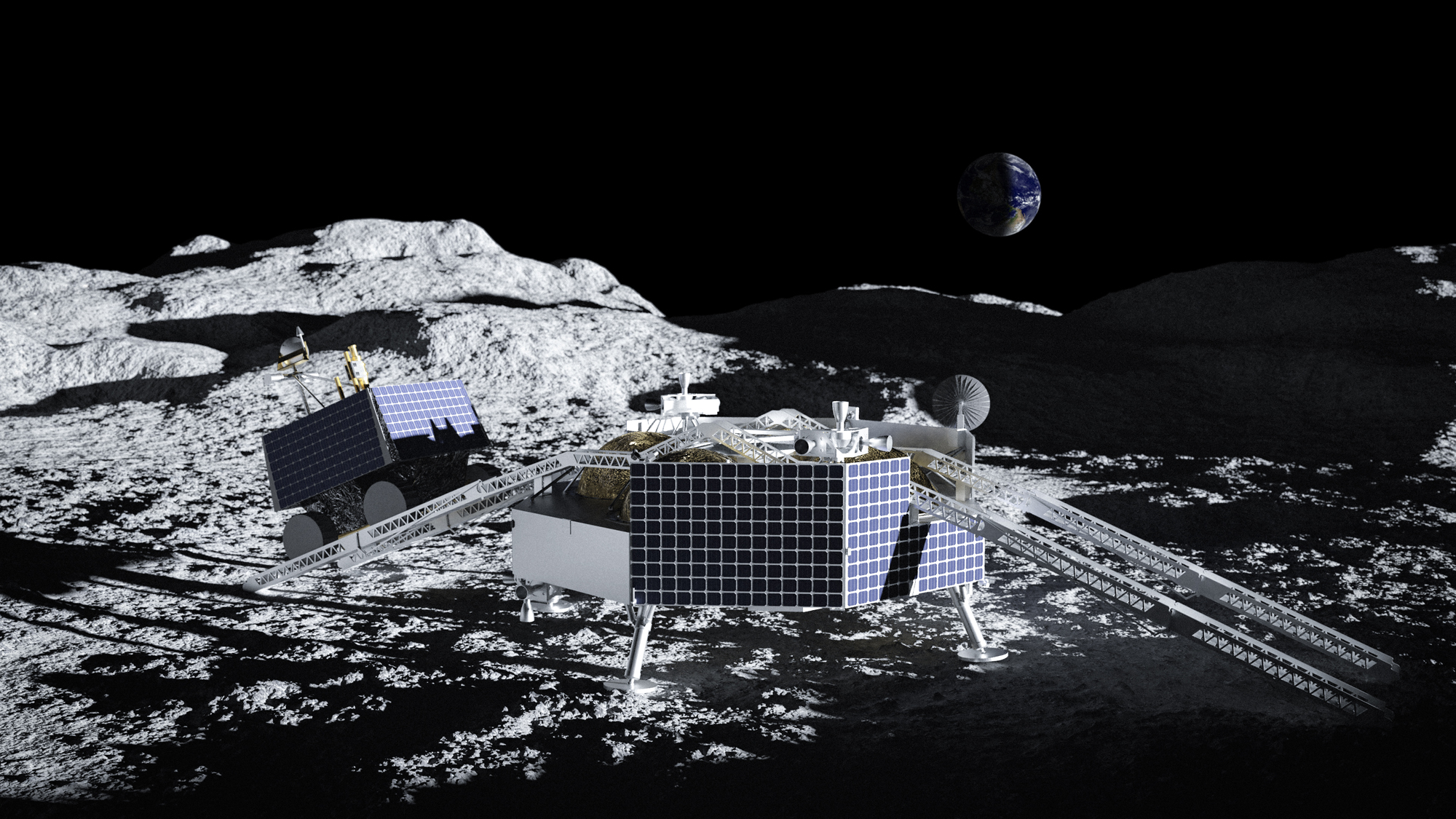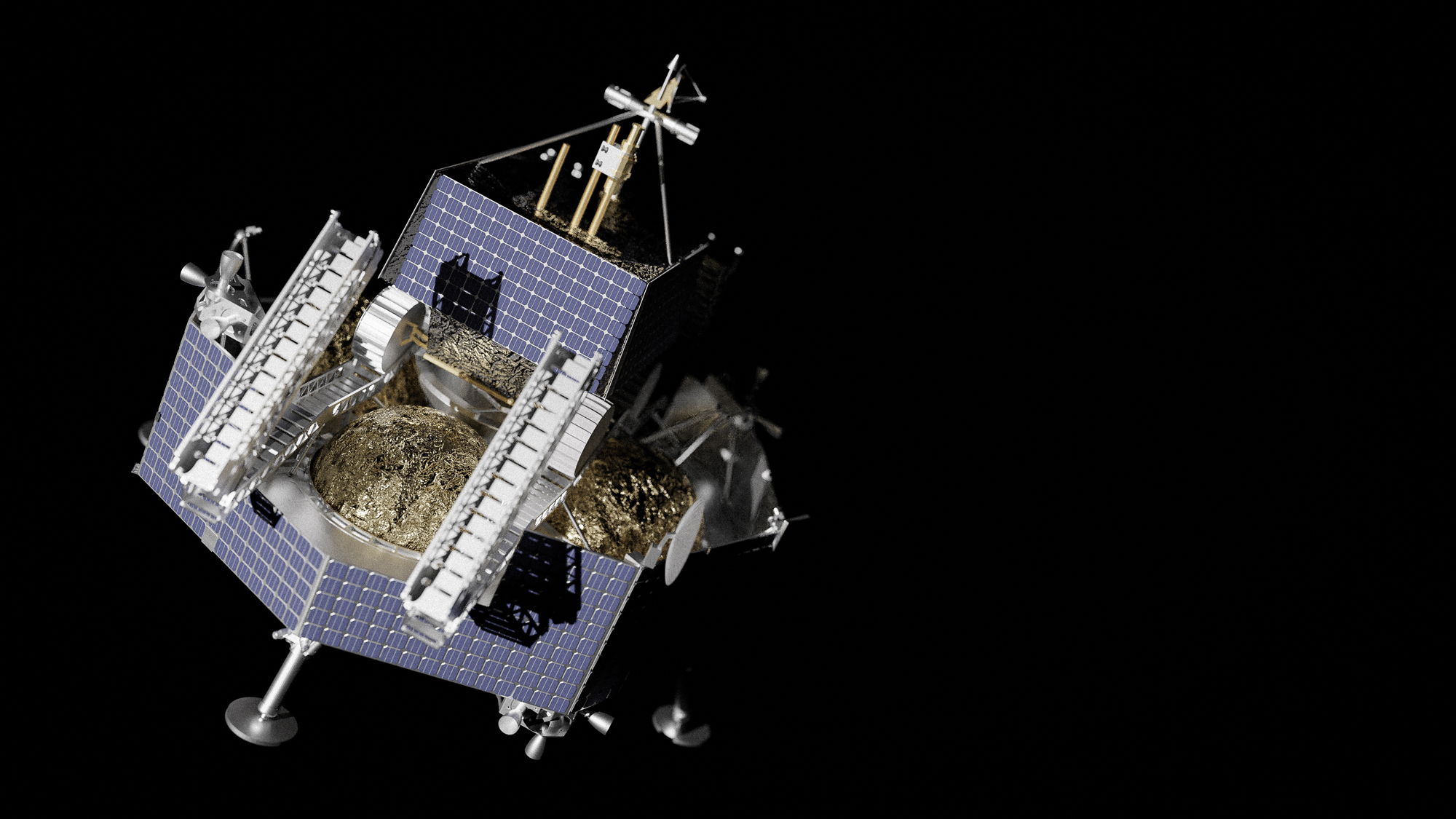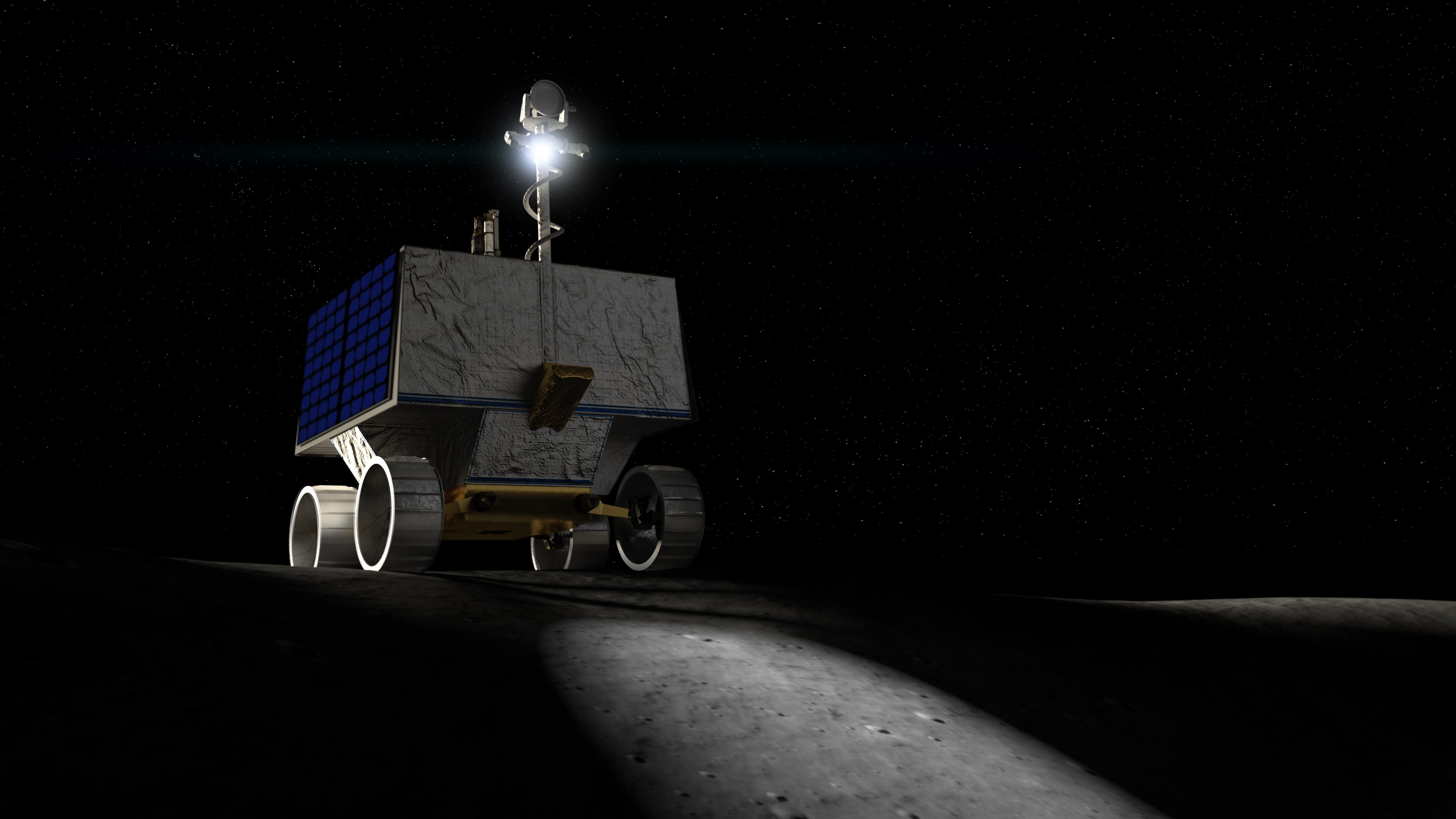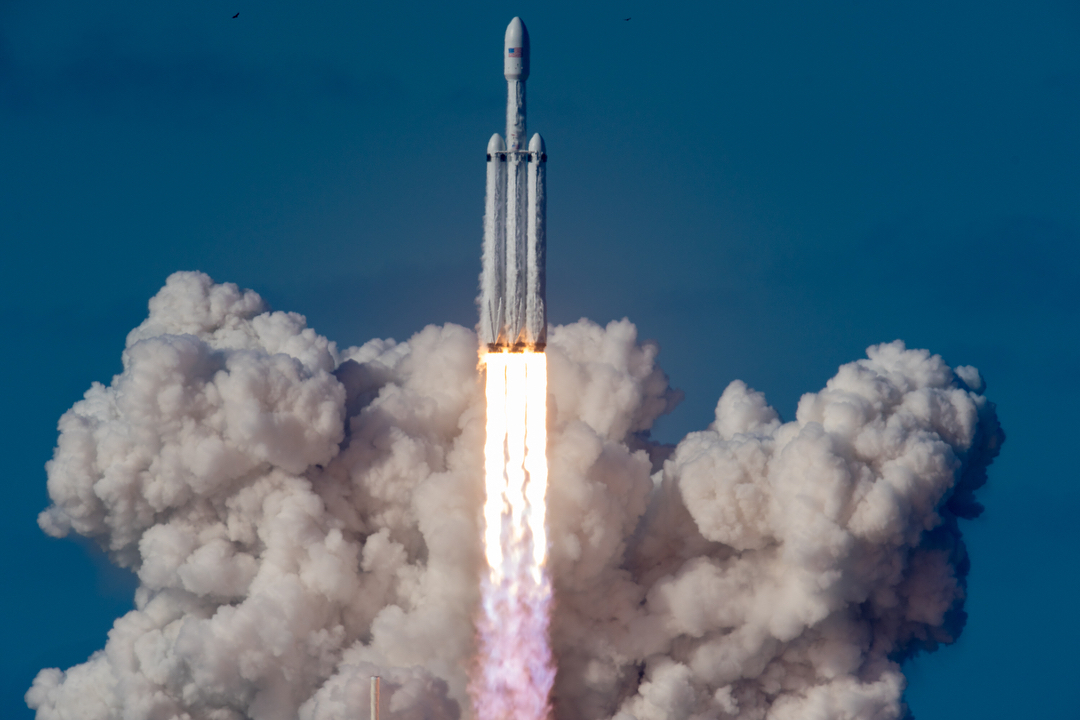SpaceX will launch Astrobotic lander to the moon with NASA's ice-sniffing VIPER rover
NASA has a launcher for its ice-hunting rover that will land on the moon in 2023.
SpaceX's Falcon Heavy rocket — the same booster type that once sent the "Starman" mannequin to space in a Tesla Roadster — will send the Volatiles Investigating Polar Exploration Rover (VIPER) to the moon, on private company Astrobotic Technology's lunar landing system.
Astrobotic's contract with NASA required the Pennsylvania-based company to independently select a launch contractor, and it chose SpaceX through a competitive procurement.
As with previous Falcon Heavy missions, SpaceX will launch VIPER from Launch Complex 39A at NASA's Kennedy Space Center near Orlando, Florida — a longtime launching location of moon missions, including the Apollo missions between 1969 and 1972.
Related: NASA picks SpaceX Falcon Heavy to launch 1st Gateway station pieces to the moon
VIPER is a key element of NASA's long-term plans to plant humans on the moon later in the decade — as soon as 2024 if the Donald Trump-era deadline remains under the new Joe Biden presidential administration. The NASA Artemis program will see crews of humans working alongside robotics to explore the moon and its resources, using NASA's Commercial Lunar Payload Services (CLPS) program.
Key among the Artemis program's goals is to learn how to live off the moon sustainably, potentially using resources such as lunar water ice at the moon's south pole to help astronauts and machinery function adequately for longer missions on the lunar surface. Humans last visited the moon during the Apollo missions, only staying for a few days at a time and bringing everything they needed from Earth.
Breaking space news, the latest updates on rocket launches, skywatching events and more!
"Gaining a better learning of resources on the moon is critical to advancing humanity's reach beyond Earth, and we are honored to support this exciting mission and NASA's CLPS program," Stephanie Bednarek, SpaceX senior director of commercial sales, said in a statement.







Astrobotic received a task order from NASA in 2020 to send VIPER to the same approximate region as the first planned lunar landing mission with astronauts, called Artemis 3, in the south pole region of the moon. The mission plan calls for the Falcon Heavy to launch Astrobotic's Griffin lunar lander towards the moon; Griffin will then touch down on the surface and provide a platform from which VIPER can disembark to move around autonomously.
No American hardware has landed softly on the moon for decades, but VIPER could be Astrobotic's second effort if its Peregrine lander touches down safely in July at Lacus Mortis, a hexagonal-shaped plain on the near side of moon. Peregrine, if successful, would be the first-ever commercial American lander on the moon — and the first United States spacecraft to touch down at all since Apollo 17 in 1972.
For VIPER, Astrobotic said it was looking for a "complete mission solution" to make sure that all pieces of the launching and landing process are ready to bring the rover to the south pole.
"SpaceX's Falcon Heavy completes our … solution by providing a proven launch vehicle to carry us on our trajectory to the moon. SpaceX has the team, vehicle, and facilities to make this happen," Daniel Gillies, mission director for Astrobotic, said in the same statement.
The Griffin lunar lander is going through qualification testing and should be finished that process around the end of 2021, Astrobotic added in the statement. Griffin will be a hefty lander capable of supporting the 1,000 lbs. (450 kilograms) VIPER; Astrobotic's overall fixed-cost contract with NASA for the mission is $199.5 million, covering everything from launch to landing.
Follow Elizabeth Howell on Twitter @howellspace. Follow us on Twitter @Spacedotcom and on Facebook.

Elizabeth Howell (she/her), Ph.D., was a staff writer in the spaceflight channel between 2022 and 2024 specializing in Canadian space news. She was contributing writer for Space.com for 10 years from 2012 to 2024. Elizabeth's reporting includes multiple exclusives with the White House, leading world coverage about a lost-and-found space tomato on the International Space Station, witnessing five human spaceflight launches on two continents, flying parabolic, working inside a spacesuit, and participating in a simulated Mars mission. Her latest book, "Why Am I Taller?" (ECW Press, 2022) is co-written with astronaut Dave Williams.

